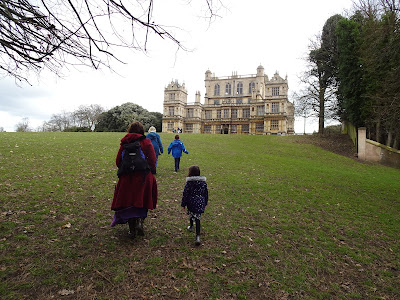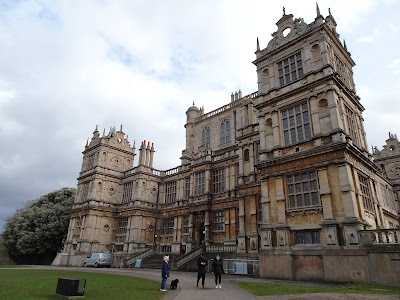See here for Part I
One of the first things we did during our one-day visit to York was to go on the highly acclaimed White Rose Tour (See above - I would recommend this tour). This provided an excellent overview of the History of the City of York, from Roman times through King Charles I convening his court outside the city gates to the recent confectionary industry in the city. Given some of the changes, traumas and brutality the city has witnessed it help reinforce my not entirely rational feeling that either history had ended or that I was simply a detached onlooker for whom history didn't happen.
Coming from Norwich, a city which according to Wiki claims to be
the most complete medieval city in the United Kingdom, it was inevitable that I'd compare York with Norwich. They have similar population size, but Norwich is far more sprawling & has undergone haphazard modernization. As a result, York gives the impression of being more densely packed with history than Norwich, especially in the famous "Shambles" area.....
 |
The Shambles, York.
|
The original fortified Roman town of York is buried under the center of the modern-day city and therefore has a largely archeological presence. This contrasts with Norwich where the nearest Old Roman town is five miles south of Norwich at Caister St Edmund. At Caister there is a very visible square embankment along with some remaining Roman walls. Norwich was founded by Saxons at least one hundred years after the Romans left York. Unlike York I'm not aware that the ghosts of Roman soldiers have been sighted in Norwich, although it is claimed that a Roman crossroads existed in the Charing Cross area of the city.
York has a huge claim to fame in the annals of Western history; namely, that Constantine the Great was declared emperor by his troops in York after his father (the emperor at the time), died in 306 whilst staying in York. I don't think Norwich has so significant a claim to being on the critical path of Western and European history. In the civil wars which often accompanied the succession of Roman emperors Constantine was eventually victorious and became the official emperor in 324. In 325 he presided over the council that gave Christian history the Nicaean Creed, a creed which has so influenced Christian thinking since. Constantine can therefore claim to have set the conceptual and geographical mold for European Christianity which has affected belief and politics right up until the present day with its division (and tensions!) between Eastern orthodox Christianity and the Western expressions of an abstract Christian ethos. As one walks around the quaint streets of York it is difficult to believe that critical path events took place here profoundly affecting the evolution of both European and world events.
 |
A very imperial looking statue of Constantine with the
Minister walls in the background |
Constantine and Europe's religious foundations.
But before all that happened York was to pass out of Roman influence and the remaining Romano-British faced Anglo-Saxon migratory infusions followed by Viking conquest. The Vikings took over the city of York in 866 (As they did also Norwich). The Jorvik experience with its animatronic Viking tableaus (which include the unpleasant smells of the time!) provides the detached end-of-history observer with a life-like almost time machine experience of the Viking past. With its smells & noises it is a very visceral experience. In fact, it reminded me of one of those fairground rides that takes you into the depths of another world. It was dark like the ghost train except that this wasn't fantasy: This was Danelaw Britain circa 800 AD and I was looking at ghosts from our past.
One can't help but measure up Danelaw living conditions with our own "end of history" standards. To the comfortable 21st century UK citizen to whom even Roman life seems very uncivilized, the Viking context is intolerably primitive and squalid. However, it is no doubt true that history has been unkind to the Vikings: Their history was largely written by those highly literate and learned Anglo-Saxon monks who were on the receiving end of ambitious Viking savagery. And yet it was clear to me from some of the exhibits at the Jorvik Centre that Viking metalwork was much more advanced than the rumored history I was acquainted with would give credit for. In particular I was very impressed with a Viking padlock, and I spent some time studying it.
 |
Real Viking ghosts!
Travel back to Viking times at the Jorvik Center in York. |
But even the Vikings eventually converted to Christianity's compelling revelation of a God of sacrificial giving and love. In fact, one tableau was of a Viking Monk giving the Christian last rights to an old woman as she died not in battle but in her bed. Given Viking maritime culture the patron saint who naturally appealed to them was St Clement, the martyr who was executed by being tied to an anchor and thrown into the sea. So even the jingoistic Vikings who reveled in force of arms and reckless brutal courage started paying at least lip service to the Christain revelation of a God of voluntary vulnerability & sacrificial love (Philippians 2:1-11). How ironic. It was these people along with other European cultures who were to eventually bring riches and advancements that they couldn't possibly imagine at that time. So, we can thank these primitives for their adventurousness, ambition and above all their conversion to Constatine's faith. Amazing. Unbelievable. Beyond remarkable.
***
The highlight of our visit was of course York Minister. It is the largest gothic period cathedral, bar one:
The present building was begun in about 1230 and completed in 1472. York Minster is the largest cathedral completed during the Gothic period of architecture, Cologne Cathedral only being completed in 1880, after being left uncompleted for 350 years. (Wikipedia)
 |
Because of its size in cramped York surroundings, it is
difficult to find a space where one can stand back far enough
from the Minister to get the whole building in one frame. |
 |
In this cavernous interior the medieval mind would have
boggled at the paradox of God's overwhelming and intimidating
glory when set against the miracle of His voluntary
self-abasement as recorded in Phil 2:1-11
|
As I looked heavenward this view gave me vertigo!
Perhaps the architect would have said "Good,
it is meant to!"
 |
So much about York Minister is record
breaking, like for example this huge
east end window, bigger than a tennis court. |
York Minister may well have been built on the top of the very spot where Constantine the Great was declared emperor by his army; that would be a fitting tribute and crowning glory to Constantine's conversion to Christianity. This conversion turned out to have momentous historical consequences and of such import that it perhaps even left a disturbance in the psychic field around York, thus explaining the well-known ghost sighting of Roman soldiers in the basement of the Treasurer's House! (See also here). After all, if I'm right about the nature of conscious cognition, reality isn't "out there", but "in here"! Are apparitions evidence that reality sometimes malfunctions and expresses itself as a kind of reified dream state?
One has to admit that not that many conversions to Christianity are followed by all together exemplary lifestyles: Highly self-motivated Christain kings seeking personal glory continued to fight, squabble and build empires by force of arms, often quite sure they were meeting out the judgement of God. (But then I continue to sin myself, mostly sins of omission I think). Perhaps the effect of Christianity is a slow burner effect: We are still a long way from peace and social harmony, a harmony that is metaphorically well represented by York Minister's glorious round west end window:
What medieval mind invented this wonder? But like
other gothic structures it probably evolved bit by bit.
Is the medieval Cathedral building period the zenith of Christianity, a Christian culture whose tide has since turned as Matthew Arnold's poem Dover Beach would have it? Ironically the individualism of Berean self-criticism (See Acts 17:10ff) which the protestant revolution unleashed is, I propose, implicated as the main cause of the turning of the tide of the Sea of Faith. The individualistic self-analysis and self-criticism encouraged in the Bible easily turns to criticism of others and when it is supplemented by the doctrine of the power of the laity it follows that every voice is a good as everyone else's voice. So, given humanity's epistemological challenges the very natural outcome of protestant Bereanism is that self-aware critical analysis should ultimately be brought to bear on Christianity itself. The power put into the hands of the laity by the protestant reformation has in turn lead to a slow burner revolution which has ultimately entailed that a take-it-or-leave-it opportunity be applied to Christianity itself and in consequence many have left it. This outcome, ironically, seems to be the ultimate outworking of Protestantism. But at least it means that in the democratic West no one is badgering one about the state of one's faith, whether it be one of belief or unbelief. So perhaps this very freedom of faith is the ironic pinnacle of Christianity? But today this private working out of one's personal salvation is in danger from traditionalist authoritarians and autocrats residing in both the east and the west.
















































